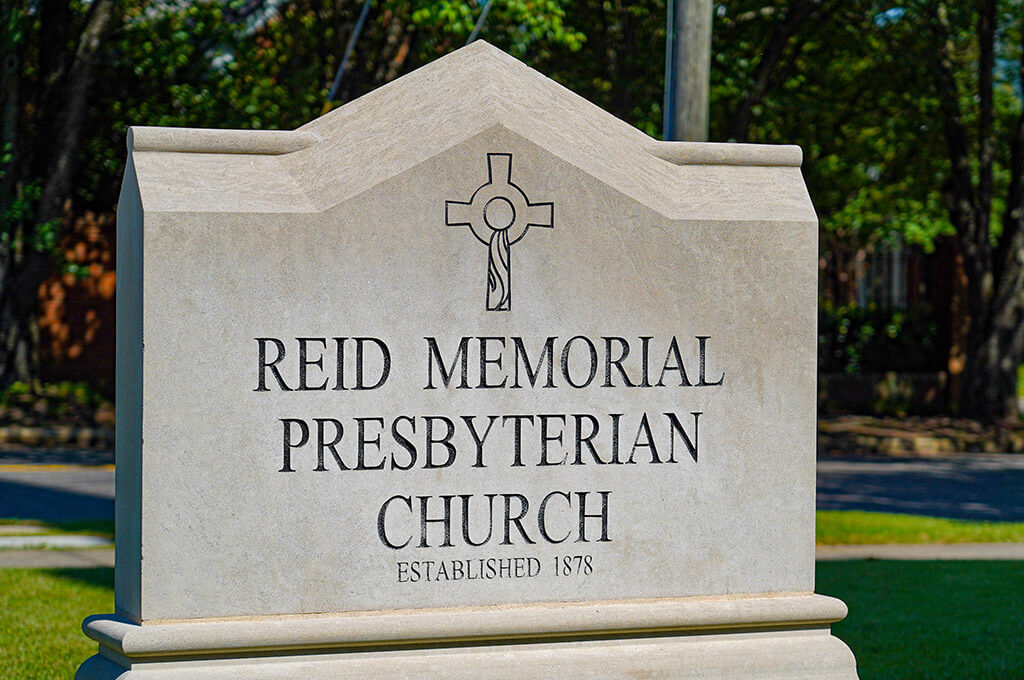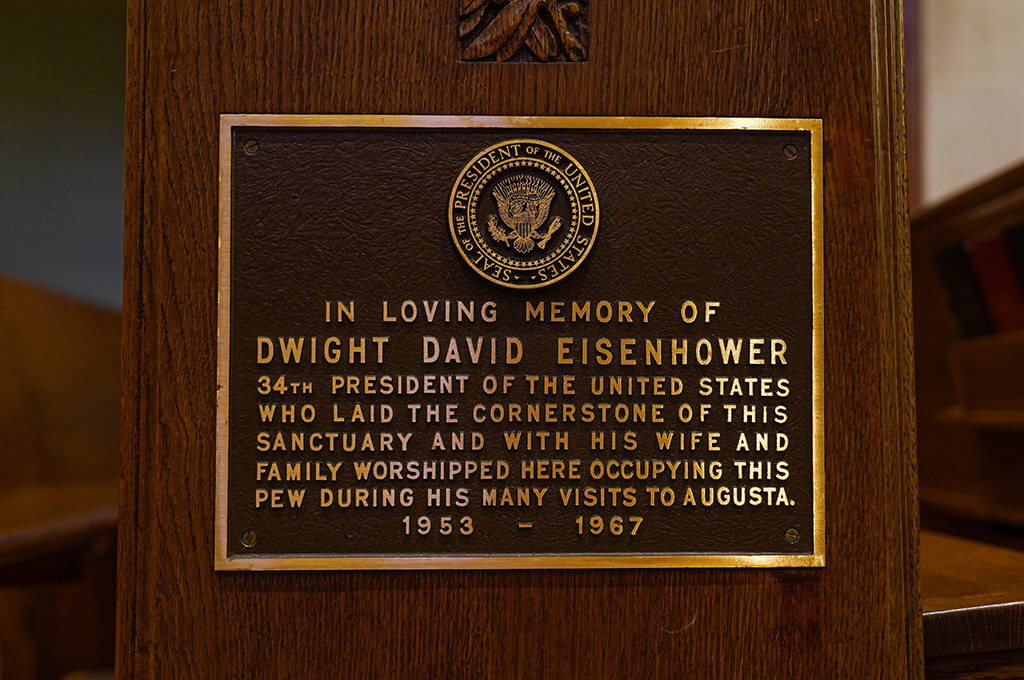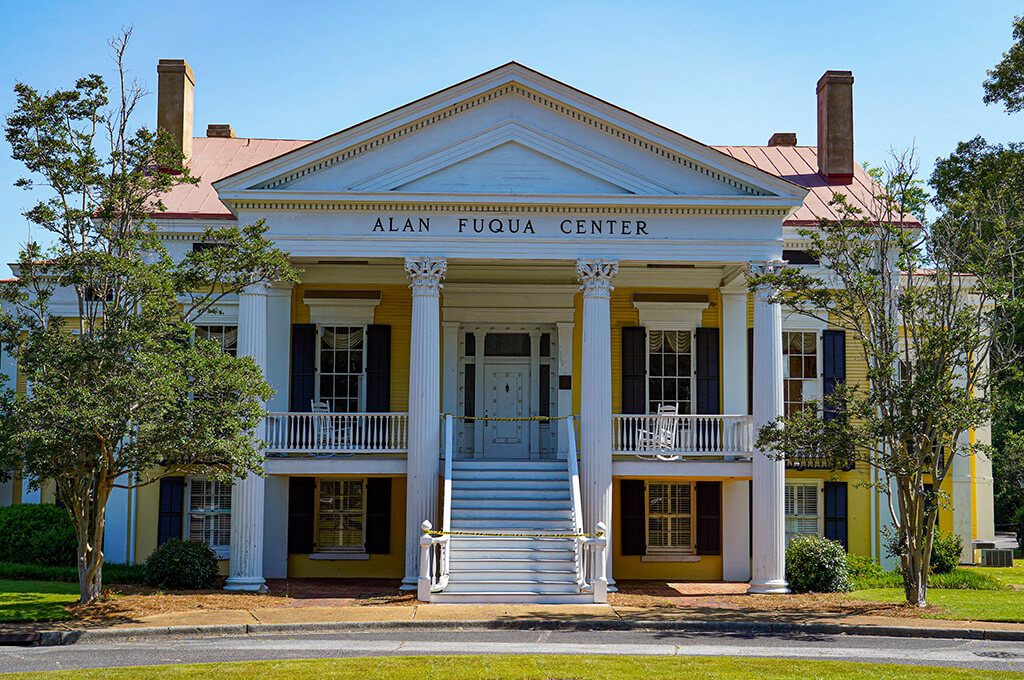Reid Memorial can trace its roots to 1879 when a community Sunday School and church building was completed to serve the small Summerville population. The fledgling community church had Wednesday evening services meeting in the already-established Church of the Good Shepherd in Summerville. There was emphasis on the religious training of the young people. These services were led by visiting ministers and speakers and several Bible study groups, which were sometimes called praying societies.

The Reid Memorial
In January 1914, 46 charter members, plus several children, stood together and sang How Firm a Foundation, a beloved old hymn which must have served as a good omen for the stalwart and progressive church. A congregation was formed, and the group affiliated with the Presbyterian Church.
The land for the new church was donated by Robert Alexander Reid, and his will stipulated the name The Reid Memorial. The church was to be used as a missionary field in Summerville under care of the pastor and The Session of the downtown First Presbyterian Church. The white marble marker from this first building is now in the narthex and bears this inscription, “Sacred to the memory of Robert Alexander Reid who died July 4, 1876, and of his wife Eleanora Louise Reid, 1813-1866. This church is a monument to their Christian charity.” By June 1914, the Rev. S. L. McCarty was called, and The Reid Memorial Church began services in September.
The 1950s
In the early 1950s, while Dr. Massey Mott Heltzel was pastor, the membership had climbed to more than 500. When it became necessary to have two services on Sunday morning, the officers and congregation voted to tear down the little church and replace it with a more modern and larger structure. The new building was dedicated November 6, 1955.
During those days, then-President Dwight D. Eisenhower and his wife, Mamie, attended Reid Memorial during the winters, and President Eisenhower laid the cornerstone for the new building in April 1954. The Redemption Window under the balcony is dedicated to the late President, and a plaque in his memory is located on the left-hand side walking in, where the Eisenhower family always sat. The new Christian Education Building was completed in 1961, and the Congregational Life Center was finished in late 1993.

October 27, 2023 — “Augusta Church Celebrates Its Ties With Eisenhower”

The Alan Fuqua Center
The Alan Fuqua Center, the large yellow house next to the church, was built in 1848-49 by Robert Alexander Reid, and was known as Montrose. Following Mr. Reid’s death the house became the home of Dr. Charles Collock Jones Jr., a widely known historian and author. The house remained in the Jones family until the mid 1900s when it was purchased by J. B. Fuqua. Montrose was donated to Reid Memorial by Mr. and Mrs. Fuqua and renamed in memory of their son Alan, in 1973.
The house was donated for youth activities and is now used by Young Life of Augusta, church middle and high school youth classes and activities, as well as weddings, receptions, and other social activities.
The 21st Century
On Sunday, Sept. 10, 2000, The Session unveiled plans to renovate our sanctuary and pipe organ. This was an exciting moment in the life of Reid Memorial. The congregation voted to support a $3,640,000 capital campaign to finance the project, which had been in the planning stages for more than three years and involved the creative ideas and talents of a “dream team” of architects, engineers, liturgical, and organ design consultants, and a significant number of members from the congregation.
The capital campaign was chaired by William S. Morris IV, who was supported by a team comprised of almost a quarter of the congregation.
A key component in the renovation was a custom rebuilt and expanded Schantz pipe organ with 3,383 pipes that is the focal point of the sanctuary. It is very exciting news that the cost of the new organ up to $700,000 was graciously committed by the Charles J. Goodwin family in memory of Thomas Wright Goodwin, M.D., elder emeritus.
“This was an incredible donation from the Goodwin family that will enrich all of our lives in the future,” Mr. Morris said.
The renovation of our sanctuary not only improved heating, lighting, and air conditioning systems, but also improved the acoustics so our congregation, choirs, and organ sing with more enthusiasm. It also dramatically beautified our worship space.
The original sanctuary was a blend of gothic and 1950s influences. The renovated sanctuary feels both more classic and more modern at the same time. Our renovated sanctuary brings much joy to our household of faith and to the many people who visit. It is a legacy for our Lord, our children, and future generations of worshipers.
